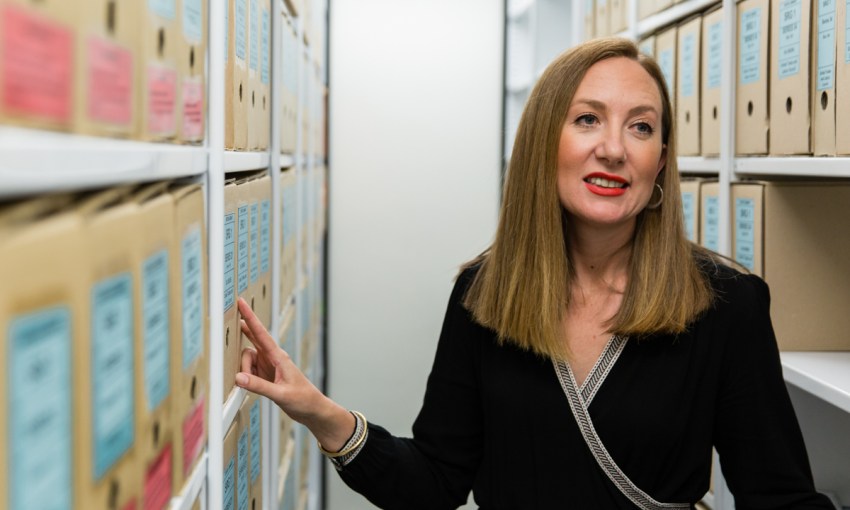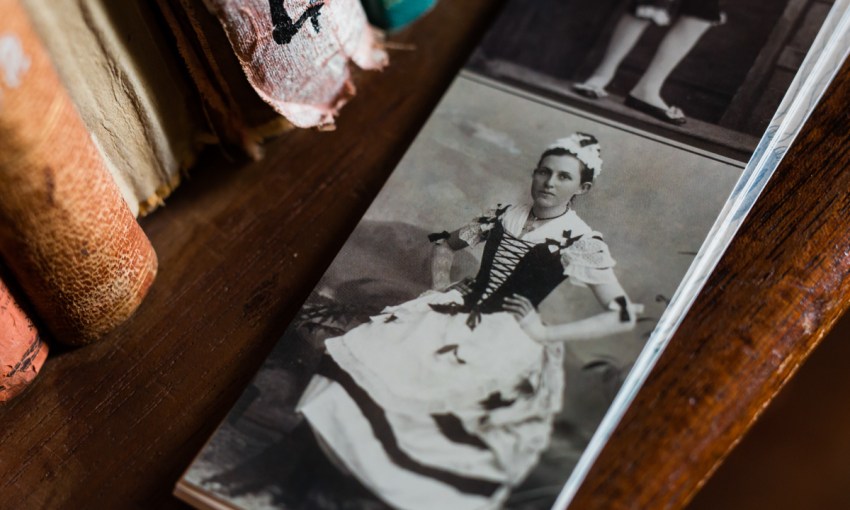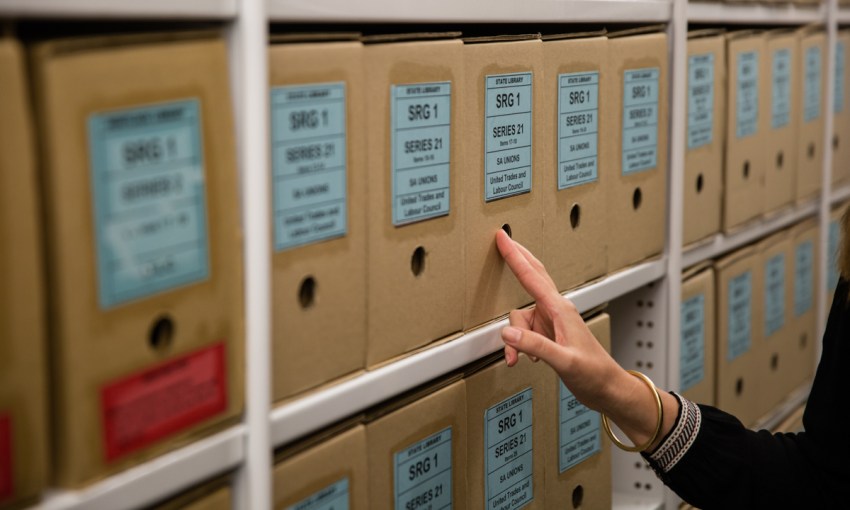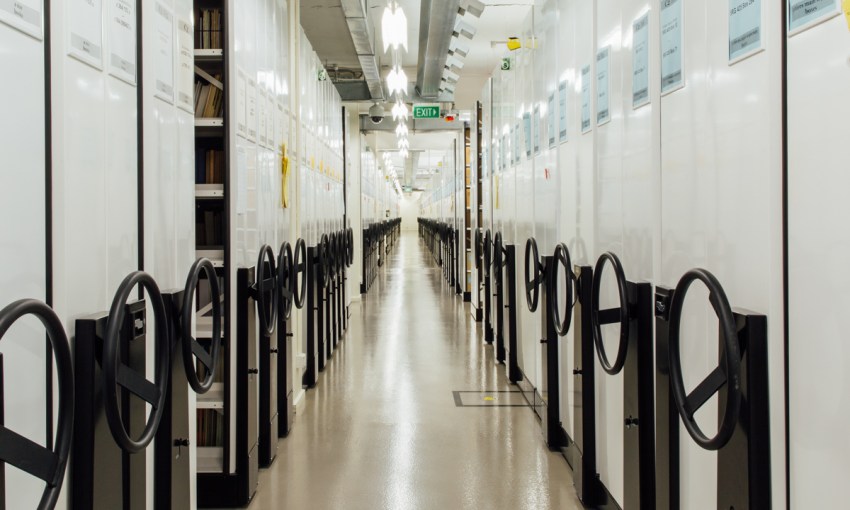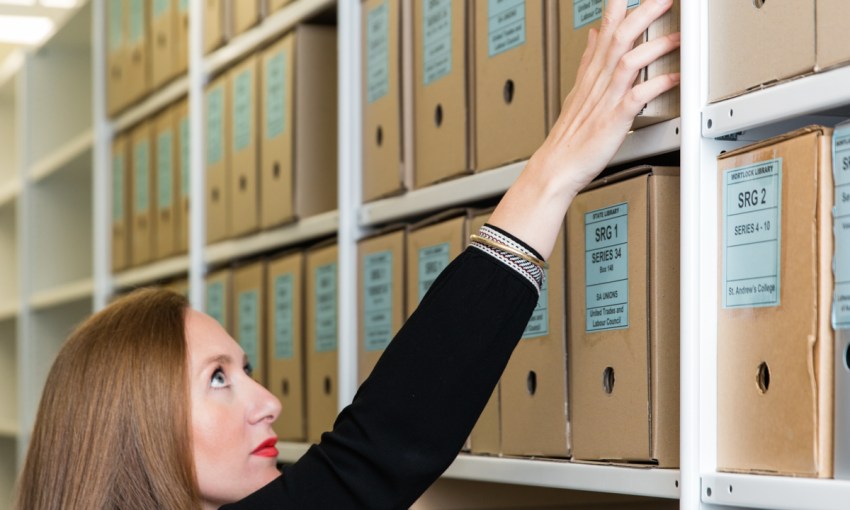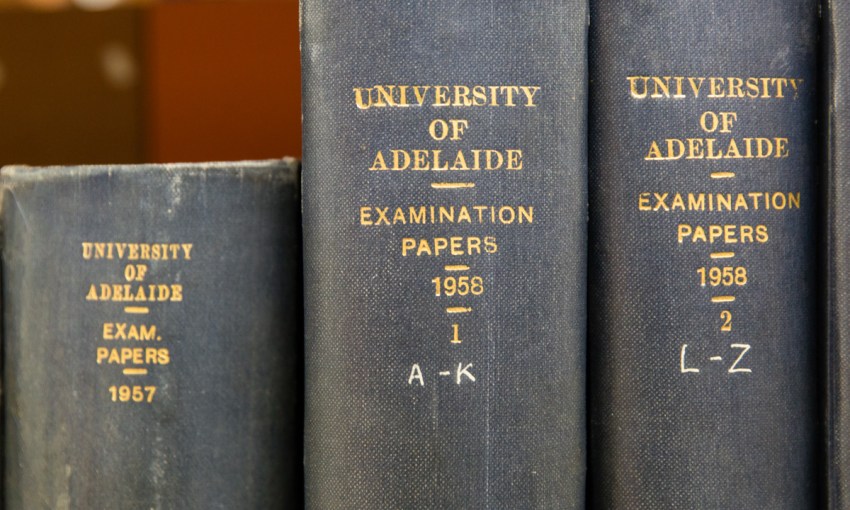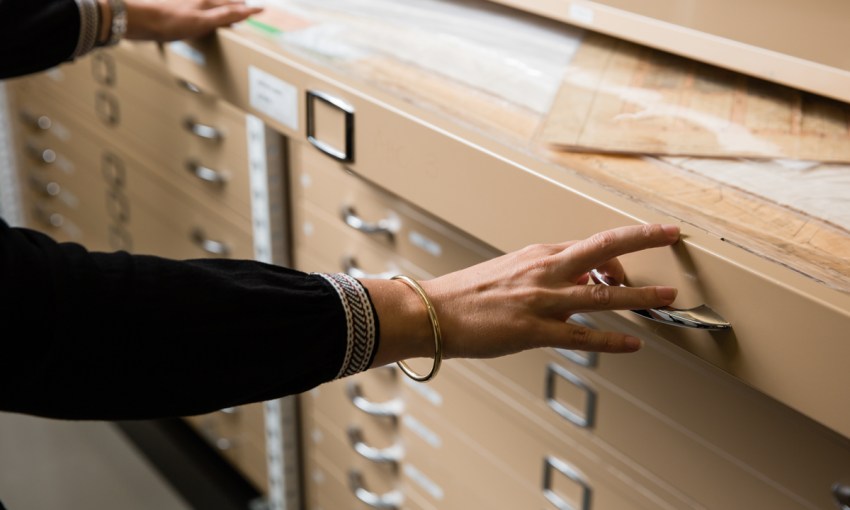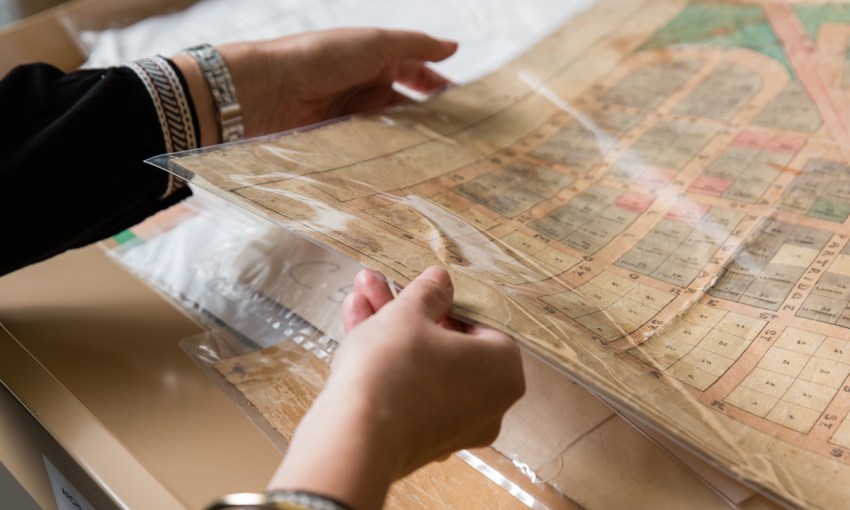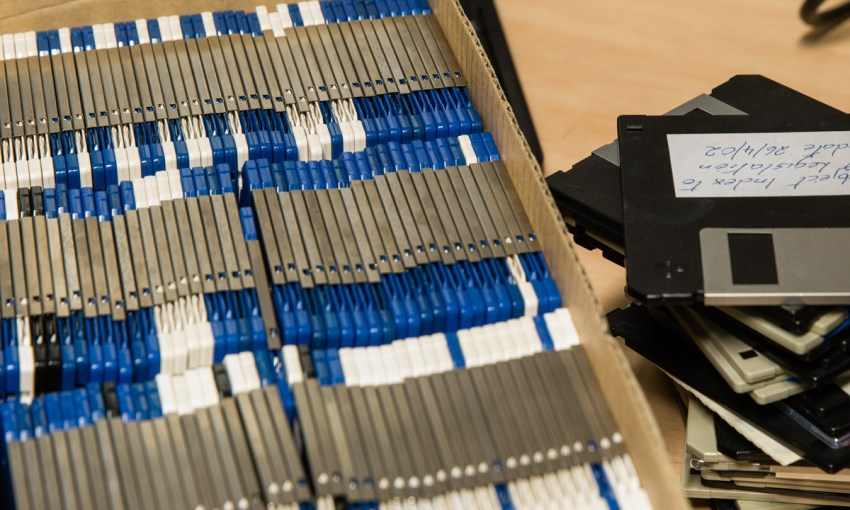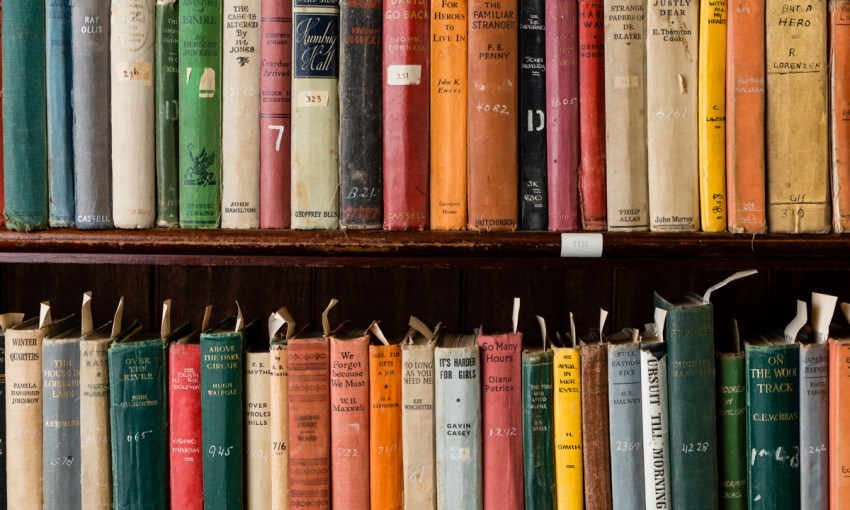Far from being glorified filing clerks, archivists are the keepers of a community’s weird, woeful, and wonderful memories: guides who help us to make sense of the past.
How to be an archivist
It’s easy to be overwhelmed by the wealth of material on display at the State Library of South Australia – but a basic familiarity with the Dewey Decimal System is enough to unlock most of its secrets.
One floor below, however – in the archives department – things are a little trickier.

The State Library’s Kate Pulford
This is where unpublished material is stored. Hidden in the stacks, among surveyor’s maps, business records, and private diaries, are some unique articles of South Australiana. It’s here that archivists decide how to catalogue items like the hide of the first cow imported into South Australia, or Janine Haines’ collection of sunglasses.
“There’s a lot of quirk in the collection,” Archival Processing Officer Kate Pulford says with a laugh as she explains that it’s part of her job to make these and millions of other items in the collection easily accessible.
The first step is a succinct description and tags relating to date, location or how an item fits into South Australia’s history.
“That’s a big thing for an archivist – you want to be able to contextualise all those different pieces of information to create meaning,” says Kate.
Another key principle is respect des fonds, which necessitates keeping a collection together to ensure it is seen in context –something that sometimes means summarising 300 boxes of papers in two sentences.
That desire to preserve everything is part of the reason for the collection’s enormity – if the paper-based materials alone were stacked, they’d make a pile 55kms high. The vast majority of that has been donated by the public, and now forms the largest collection of South Australiana in the world.
Traditionally, archival materials were ordered up for people to peruse in the Somerville Reading Room, but these days an increasing amount can be found online.
“In the old days archivists would be more at the coal face, we’d have a lot more to do with the customers,” Kate says.
In this case, the “old days” are way back in 2004, when she began working in this surprisingly fast-moving field. These days, archivists spend much of their time trying to digitise as well as catalogue collections.
It’s a Sisyphean task at the State Library, with new material arriving as quickly as the six archivists can work their way through the backlog. The Library is crying out for more staff, and Kate estimates that they’ve made their way through less than 10 per cent of the collection.
Most of the what they already have exists in physical form, but an increasing amount of donations arrive on a bewildering array of devices. Floppy discs, CDs, flash drives and DAT tapes containing material saved on all manner of outdated software are the forerunners of what archivists refer to as the “digital deluge”.
That’s where Fred comes in. The Forensic Recovery of Evidence Device reads material from all kinds of contraptions and creates disc images that can be stored for later access. This preserves the material before the storage devices are too damaged to access – the shelf life of a floppy disc is around 30 years, and for a flash drive it’s 5-10.

The legendary FRED (Forensic Recovery of Evidence Device)
After losing her thesis when she was completing an Art History degree many years ago, it’s a problem that Kate is all too aware of. Now, as well as studying the latest digital preservation methods, Kate spends part of her time educating the public and running workshops on how to create and back up digital records.
But, Kate says that no matter how much technology advances, the role of an archivist will always ultimately be to store things so that they can be found again – “the bottom line is there’s no point in having it if you can’t access it”.



